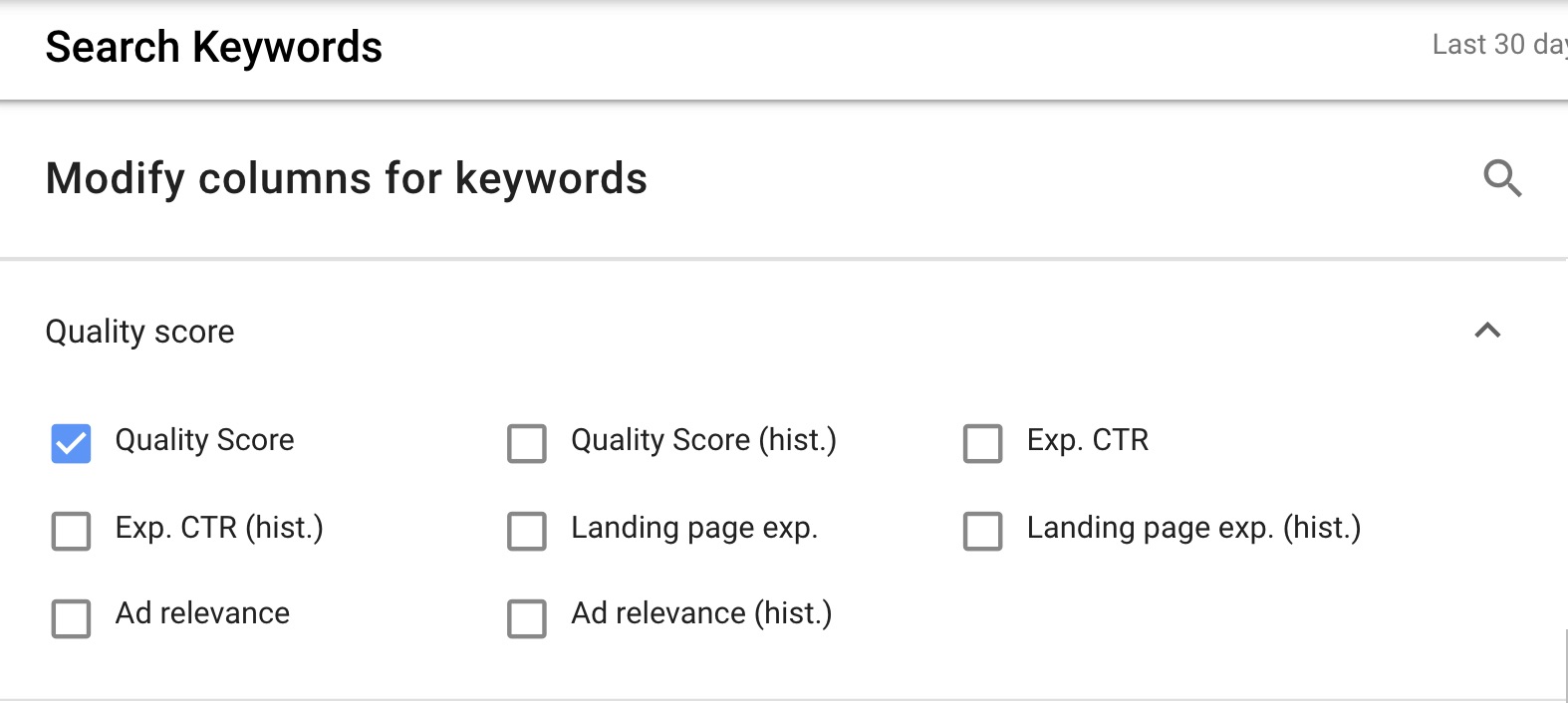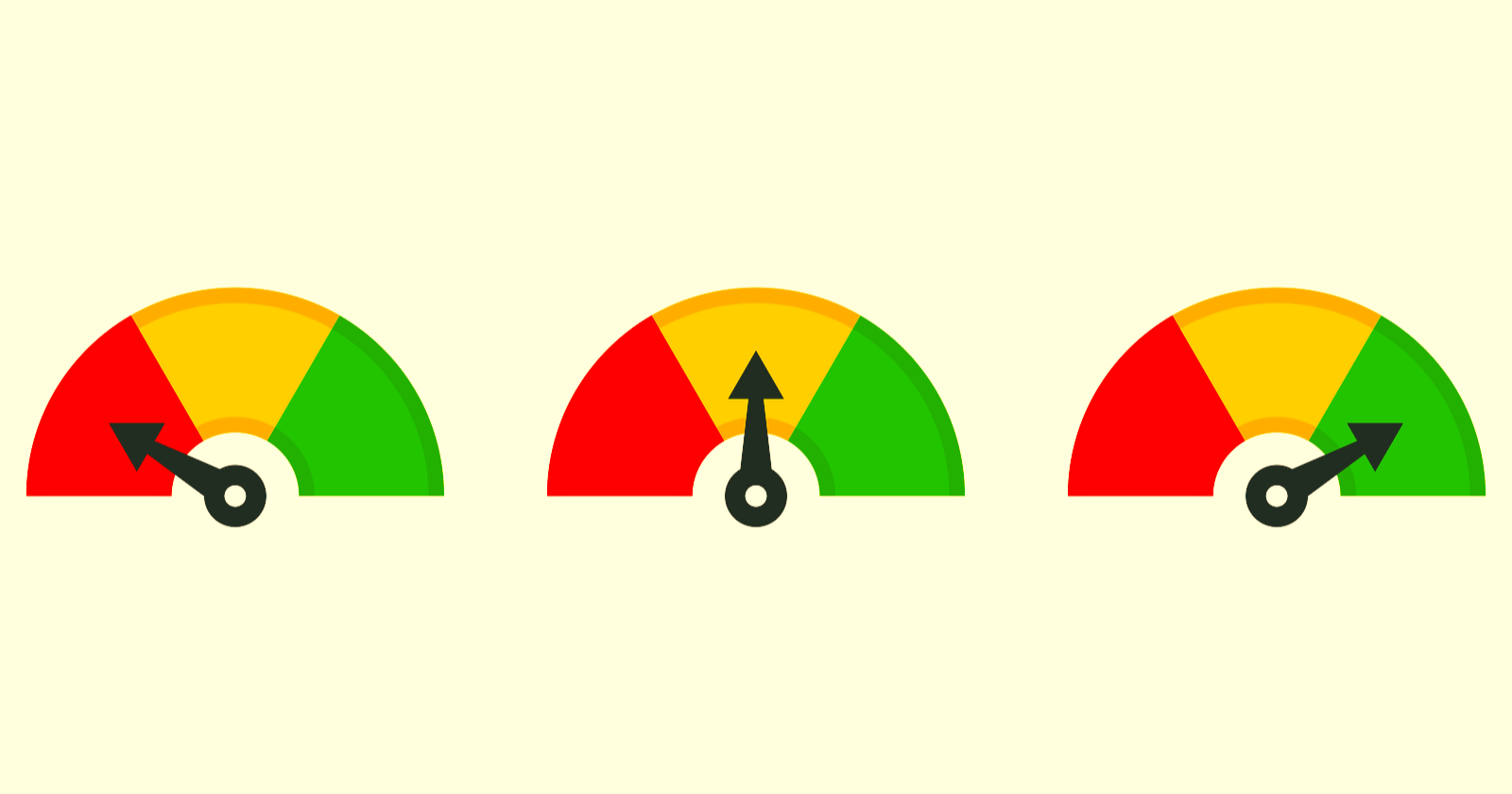In the world of paid search, there’s always room to improve the searcher experience and thus the conversions you earn.
Quality score data is one way advertisers can get feedback on Google Ads to help guide strategic decisions on account structure, keywords, and ad copy.
Are your PPC advertising campaigns performing as well as they could be?
How Google Calculates Quality Score
Quality score is used as a diagnostic tool for PC managers to better understand where improvements in their Google Ads accounts could be made.
Google Ads uses the Quality score metric to determine where a PPC ad should appear in the paid search results and how much the advertiser should pay per click.
Quality score is tied to three main components:
- Ad relevance.
- Landing page experience.
- Expected CTR.
Use these are key components to monitor and optimize when reviewing the quality score data in the keyword views.
Start out with reviewing the Quality score reporting:
- View results at scale: Google Ads displays quality score component columns at the keyword level.
- Access historical quality score performance data: It’s easy to see how your score has changed over time.
- Export your data: This makes it easier to analyze.
How to Use Quality Score Reporting
Quality score can be viewed at the keyword level in Google Ads.
You can modify the column view to see the “quality score” metrics to create a custom view.
Save these columns for future use and quick insight into quality score performance.

In addition to seeing the historical/last known quality score for the reporting period, you also can dig deeper by changing the time periods to see month-over-month and even segmenting by day to compare the score changes.

With these detailed insights, you can focus on areas that need improvement.
Let’s look at an example:

If you were managing this PPC account, you now clearly see where you need to focus your efforts to raise the quality score: Expected CTR.
You can also manipulate date ranges to see if there is any valuable historical information.
In this example, the score hasn’t changed. It was (and still is) “below average,” the lowest rating.
Since the other quality score factors are “above average,” this should be the area to focus on to improve the ad’s performance.
Let’s examine the three key components contributing to quality score that can be optimized to improve ad ranking and lower CPCs.
Component: Ad Relevance
The closer the connection between the keyword and ad copy, the higher the keyword relevance.
Usually, you see poor ad relevance because:
- Ad groups not laser-focused on a keyword theme.
- Ads were copied from one ad group to another without editing the keywords and tailoring them to the ad copy for the new ad group.
Having a proper account structure will improve relevance. Make sure your campaigns and ad groups are smaller and contain highly targeted themes.
Top Tips
1. Start out by ensuring the top keywords are in the ad copy. Try to incorporate these into the headline, body, and display path fields, if possible.
2. Determine whether the ads match the searcher intent of the keywords. If not, they should be moved to a different or new ad group with more relevant ad copy.
Component: Landing Page Experience
A great landing page experience is essential if you want to turn those clicks into conversions.
The landing page should be easy to navigate and the advertised product should be featured clearly on the page.
If there is a form or download on the page, tell the user what will happen after they take action.
For example, once the form is submitted, they will be directed to a free trial. Or, once they click on the “download” button, a PDF brochure file will begin to download.
For the purposes of Quality score, we want to ensure that the messaging from the ad copy is carried over to the content on the landing page.
For example, if the keyword and ad are promoting thermal mugs, the ad should include [thermal mugs] in the copy and thermal mug products should be the primary products on the landing page.
This ensures your landing page content is relevant and useful to the searcher. This will help improve your Quality score.
Advertisers also want to look at mobile landing page performance. Google has a tool that will show page speed on mobile and mobile-friendliness.
More than half of visitors leave mobile sites when pages don’t load within three seconds, according to Google.
Some common causes for longer load time include slow/multiple redirects, large page size, or a slow server.
Google’s tool also provides a downloadable report with technical details that can be passed along to the web developer for troubleshooting.
Google Ads reviews mobile landing pages as well, so the performance of landing pages from a mobile perspective should be a consideration for all advertisers.
Top Tips
3. To improve usability and conversions, use copy on the landing page to communicate to the user what will happen next when they complete an action.
4. Use the Google tool or a similar one to gauge the current landing page performance. Check more than one page to ensure the results are consistent.
Component: Expected CTR
Google Ads calculates an expected CTR representing the likeliness of the ad receiving a click when it is served. The expected CTR doesn’t take ad rank or ad extensions into consideration.
The expected CTR is different from the CTR in the Google Ads account.
The expected CTR is estimated based on how the keyword performs in the account along with other advertisers’ accounts. Pausing keywords also pauses the quality scores, so they will not change over time.
Low CTRs or a below-average expected CTR could occur for a variety of reasons.
One of these is the ad copy not being closely connected to the keyword. For example, someone searching for [thermal mugs] is less likely to click on a brand ad for a kitchen store.
Oftentimes, even though the keyword and ad copy are closely connected, the keywords could be triggered by irrelevant searches. This can be discovered in the search terms reports by examining the individual queries and themes triggering ads.
Focusing on adding negative keywords and adjusting keyword match types can improve CTRs, which will improve your quality score.
Top Tips
5. Check below-average expected CTR to ensure the ads are matching the keyword grouping.
6. Prevent irrelevant searches from triggering ads by creating negative keywords and tightening up match types.
Final Thoughts
Historical quality score data is incredibly helpful for identifying any optimization you need to do to improve your ad relevance, landing page experience, or expected CTR.
Use it to start making smarter decisions and better PPC ads now!
More Resources:
- 10 Paid Search & PPC Planning Best Practices
- Developing a Sustainable PPC Strategy: What You Need to Know
- PPC 101: A Complete Guide to PPC Marketing Basics
Image Credits
All screenshots taken by author, May 2021





